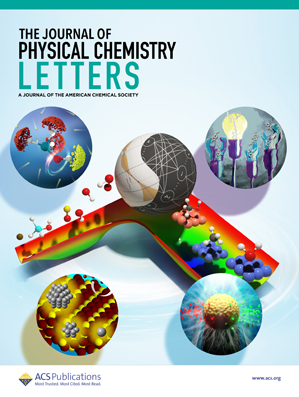用于视频分类的机器学习能够从模拟时间演变的多维光谱中量化分子间耦合
IF 4.8
2区 化学
Q2 CHEMISTRY, PHYSICAL
引用次数: 0
摘要
二维电子光谱(2DES)中的信号编码有关分子结构中的电子、振动和振动耦合的信息。然而,化学信息往往难以提取。在这里,我们使用(2+1)维卷积神经网络((2+1)D-CNN)将模拟的2DES光谱映射到它们的底层电子耦合。与低维网络架构相比,(2+1)D-CNN方法可以访问2DES信号中的所有时间和频率维度。我们发现(2+1)D-CNN算法对二聚体中的库仑耦合进行分类,交叉验证精度为(96.2±1.0)%,达到10倍。通过检查优化后的CNN滤波器,我们发现(2+1)D-CNN从2DES光谱的频域峰及其时间演化(包括量子跳动)中学习。我们还生成并分析了类激活图(CAMs),以揭示光谱数据的哪些特征对(2+1)D-CNN分类最重要。这些研究提供了一种机器学习方法来解决多维光谱中的逆问题,并提供了更好地理解化学信息如何在光谱数据中编码的策略。本文章由计算机程序翻译,如有差异,请以英文原文为准。

Machine Learning for Video Classification Enables Quantifying Intermolecular Couplings from Simulated Time-Evolved Multidimensional Spectra
Signals in two-dimensional electronic spectroscopy (2DES) encode information about electronic, vibrational, and vibronic couplings in molecular structures. However, chemical information is often difficult to extract. Here, we use a (2+1)-dimensional convolutional neural network ((2+1)D-CNN) to map simulated 2DES spectra to their underlying electronic couplings. The (2+1)D-CNN approach, in contrast to lower-dimensional network architectures, can access all of the time and frequency dimensions in the 2DES signal. We find that the (2+1)D-CNN algorithm classifies regimes of Coulombic couplings in dimers with a 10-fold cross-validation accuracy of (96.2 ± 1.0)%. By examining the optimized filters within the CNN, we find that the (2+1)D-CNN learns from frequency-domain peaks in 2DES spectra and their time evolution (including quantum beating). We also generate and analyze class-activation maps (CAMs) to reveal which features of the spectroscopic data are most important for the (2+1)D-CNN classifications. These studies provide an ML approach to address inverse problems in multidimensional spectroscopy and provide strategies to better understand how chemical information is encoded in spectroscopic data.
求助全文
通过发布文献求助,成功后即可免费获取论文全文。
去求助
来源期刊

The Journal of Physical Chemistry Letters
CHEMISTRY, PHYSICAL-NANOSCIENCE & NANOTECHNOLOGY
CiteScore
9.60
自引率
7.00%
发文量
1519
审稿时长
1.6 months
期刊介绍:
The Journal of Physical Chemistry (JPC) Letters is devoted to reporting new and original experimental and theoretical basic research of interest to physical chemists, biophysical chemists, chemical physicists, physicists, material scientists, and engineers. An important criterion for acceptance is that the paper reports a significant scientific advance and/or physical insight such that rapid publication is essential. Two issues of JPC Letters are published each month.
 求助内容:
求助内容: 应助结果提醒方式:
应助结果提醒方式:


